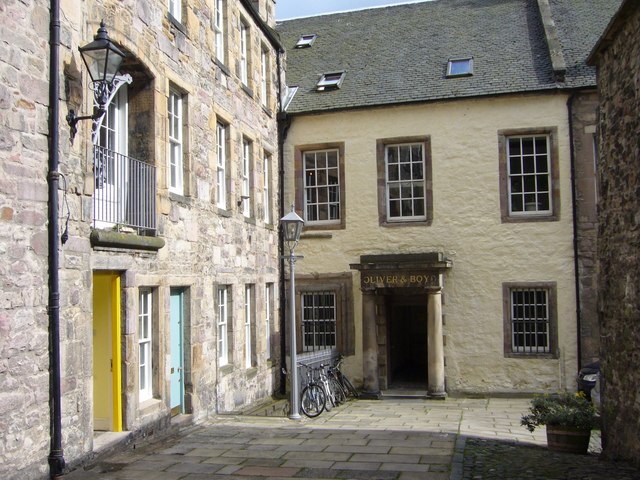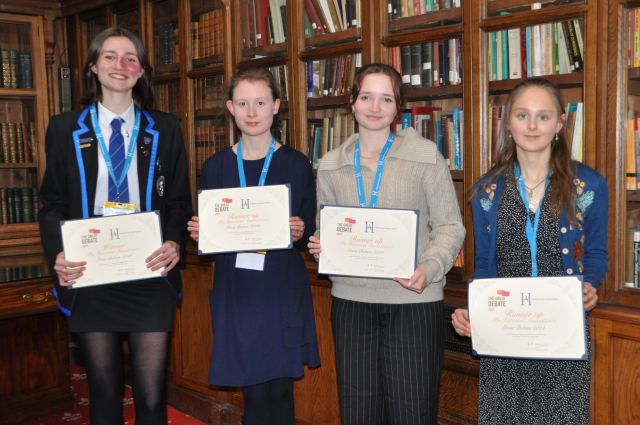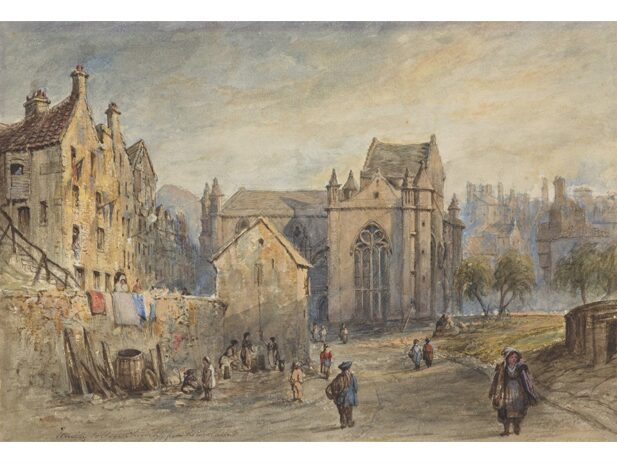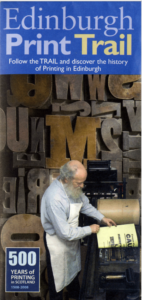
I’ve always considered the price of admission excellent value for money. I’m referring to that of the membership of the Old Edinburgh Club. If the first-class lectures and the highly readable annual Book weren’t enough, there’s the added value in participating in the guided walks the Club organises in conjunction with leading experts and organisations. There’s a series of these during the summer each year.
When I say ‘added value’, I’m only scratching the surface of what I took away from listening to Dr Helen Williams, Secretary of the Scottish Printing Archival Trust, as she guided us through Edinburgh’s Printing Heritage. This covered ground from the Writers’ Museum to the Netherbow and, in the process, 450 years of printing activity in the Old Town. That’s right, the Edinburgh Printing Trade over three centuries in 60 minutes with generous quantities of fresh air and exercise to boot!
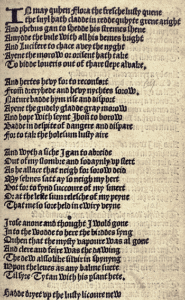
The question that arose for me was that although Edinburgh’s stature as a literary centre is well recognised, what with UNESCO bestowing the honour of World City of Literature upon it and many illustrious authors synonymous with it, how much knowledge do we have collectively about the printing industry that underpinned all this literary heritage? I have to admit to knowing very little prior to our illuminating expedition.
Assembled in Wardrop’s Close, a large group of OEC members were delighted to discover that the adjacent Writers Museum houses an early wooden press used by James Ballantyne to print Sir Walter Scott’s Waverley novels, just the first of so many compelling facts to enlighten us as we enjoyed making our way. Did you know Walter Chapman brought the first printing press to the city in the early 1500s or that the first known printed book is believed to be The Complaint of the Black Knight (pictured right) in 1508 by Chapman and Myllar? Okay, you might be able to pluck these facts from a Wikipedia page but they’re so much more engrossing from the telling of an expert guide.
What became something of a running theme was the need for growing businesses to relocate. This was certainly the case with James Pillans, who opened a print shop in Riddles Court in 1775 with his sons before moving the business to James Court in 1827 (as H & J Pillans). It remained there until the need for larger premises led to their move to Thistle Street Lane in the New Town 50 years later.
Opposite St Giles we paused to learn that Allan Ramsay had his bookshop in one of the Luckenbooths once occupying the street to its north.
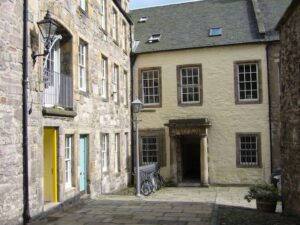
The subject just kept opening up. Have you ever stopped, for example, to consider not only printing but the other, just as important, associated industries such as papermaking and bookbinding? Conducting their business from the early 1800s, we learnt that Oliver & Boyd became the first firm to combine, on a large scale, printing, bookbinding and publishing in a single premises. While in Tweeddale Court and observing a flat balcony (upon which a hoist for lifting material up into the works remains, pictured left) we were all taken aback as someone appeared at the window to expand on what Helen was telling us. It was if this had been planned, there he was on cue. But it was simply a random event although the group did suggest that Helen might want to keep the double act for future walks.
Dr Williams was generous not only with her detailed knowledge and enthusiasm but also in providing us each with a copy of the ‘Edinburgh Print Trail’ brochure, fresh off the press. This is a Scottish Printing Archival Trust production and we felt privileged to be amongst the first members of the public to get our hands on it.
For me, the walk was one of those tours where so many symbols, signs and markings were brought to our attention, emblems that would perhaps be missed had they not been flagged. For me, it heightened the fascination and conjured images of a busy industrial past that I found exciting. There was much that resonated with me, with my favourite discovery was seeing inscribed upon a doorway in Advocates Close: “He That Tholes Overcomes.” Again it crossed my mind that even if facts and figures can be extracted from other sources, there’s no substitute for sharing an experience like this with others while you learn and absorb the richness to be discovered. I couldn’t help thinking also that this experience might have passed me by if I had not been an Old Edinburgh Club Member. To me, membership is the gift that keeps on giving and never a penny better spent.
By John McAleese

